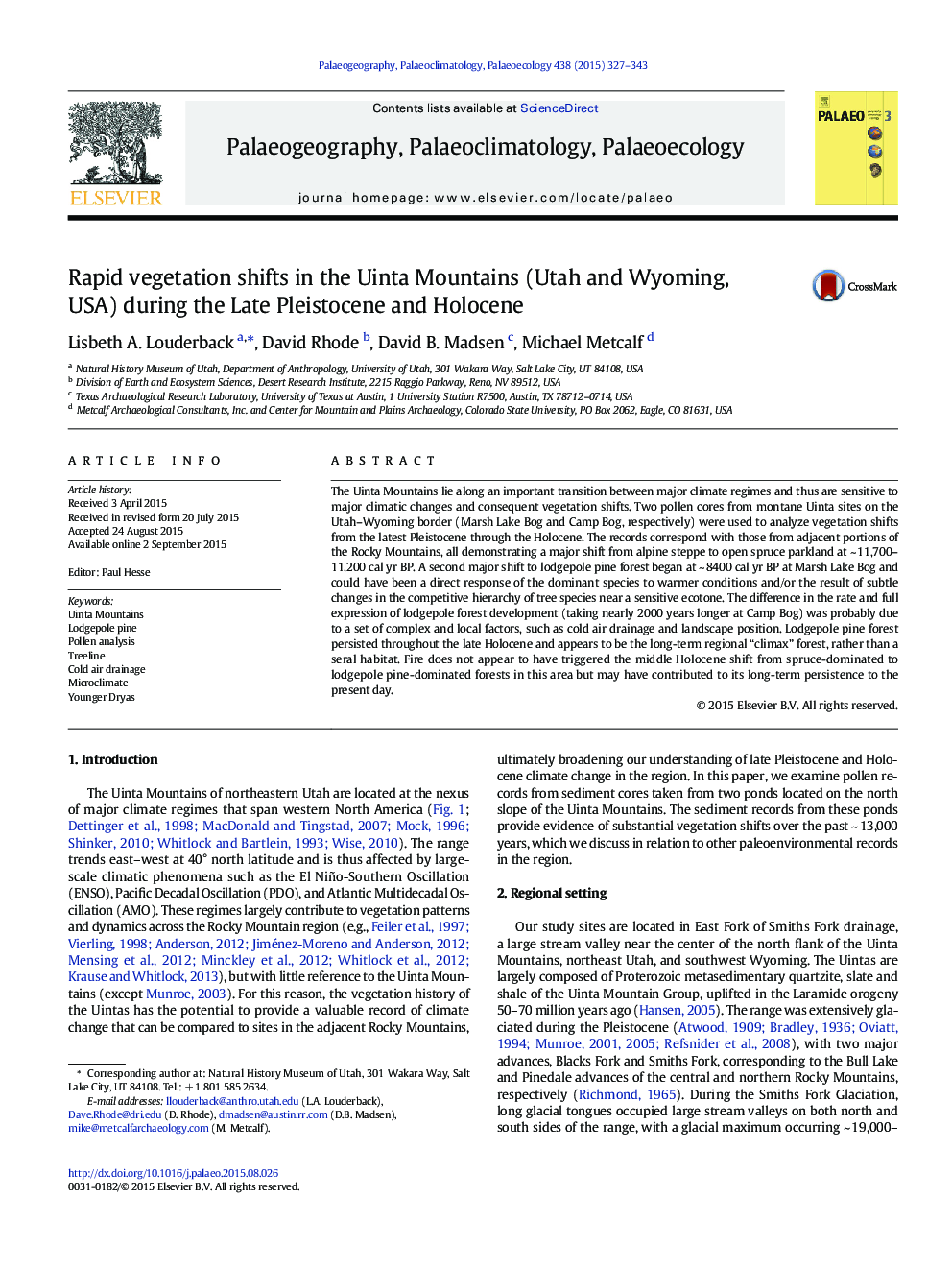| کد مقاله | کد نشریه | سال انتشار | مقاله انگلیسی | نسخه تمام متن |
|---|---|---|---|---|
| 6349647 | 1622152 | 2015 | 17 صفحه PDF | دانلود رایگان |
عنوان انگلیسی مقاله ISI
Rapid vegetation shifts in the Uinta Mountains (Utah and Wyoming, USA) during the Late Pleistocene and Holocene
ترجمه فارسی عنوان
تغییرات سریع گیاه در کوههای یونتا (یوتا و وایومینگ، ایالات متحده آمریکا) در طول پیلوستسن پسین و هولوسن
دانلود مقاله + سفارش ترجمه
دانلود مقاله ISI انگلیسی
رایگان برای ایرانیان
کلمات کلیدی
موضوعات مرتبط
مهندسی و علوم پایه
علوم زمین و سیارات
فرآیندهای سطح زمین
چکیده انگلیسی
The Uinta Mountains lie along an important transition between major climate regimes and thus are sensitive to major climatic changes and consequent vegetation shifts. Two pollen cores from montane Uinta sites on the Utah-Wyoming border (Marsh Lake Bog and Camp Bog, respectively) were used to analyze vegetation shifts from the latest Pleistocene through the Holocene. The records correspond with those from adjacent portions of the Rocky Mountains, all demonstrating a major shift from alpine steppe to open spruce parkland at ~ 11,700-11,200 cal yr BP. A second major shift to lodgepole pine forest began at ~ 8400 cal yr BP at Marsh Lake Bog and could have been a direct response of the dominant species to warmer conditions and/or the result of subtle changes in the competitive hierarchy of tree species near a sensitive ecotone. The difference in the rate and full expression of lodgepole forest development (taking nearly 2000 years longer at Camp Bog) was probably due to a set of complex and local factors, such as cold air drainage and landscape position. Lodgepole pine forest persisted throughout the late Holocene and appears to be the long-term regional “climax” forest, rather than a seral habitat. Fire does not appear to have triggered the middle Holocene shift from spruce-dominated to lodgepole pine-dominated forests in this area but may have contributed to its long-term persistence to the present day.
ناشر
Database: Elsevier - ScienceDirect (ساینس دایرکت)
Journal: Palaeogeography, Palaeoclimatology, Palaeoecology - Volume 438, 15 November 2015, Pages 327-343
Journal: Palaeogeography, Palaeoclimatology, Palaeoecology - Volume 438, 15 November 2015, Pages 327-343
نویسندگان
Lisbeth A. Louderback, David Rhode, David B. Madsen, Michael Metcalf,
